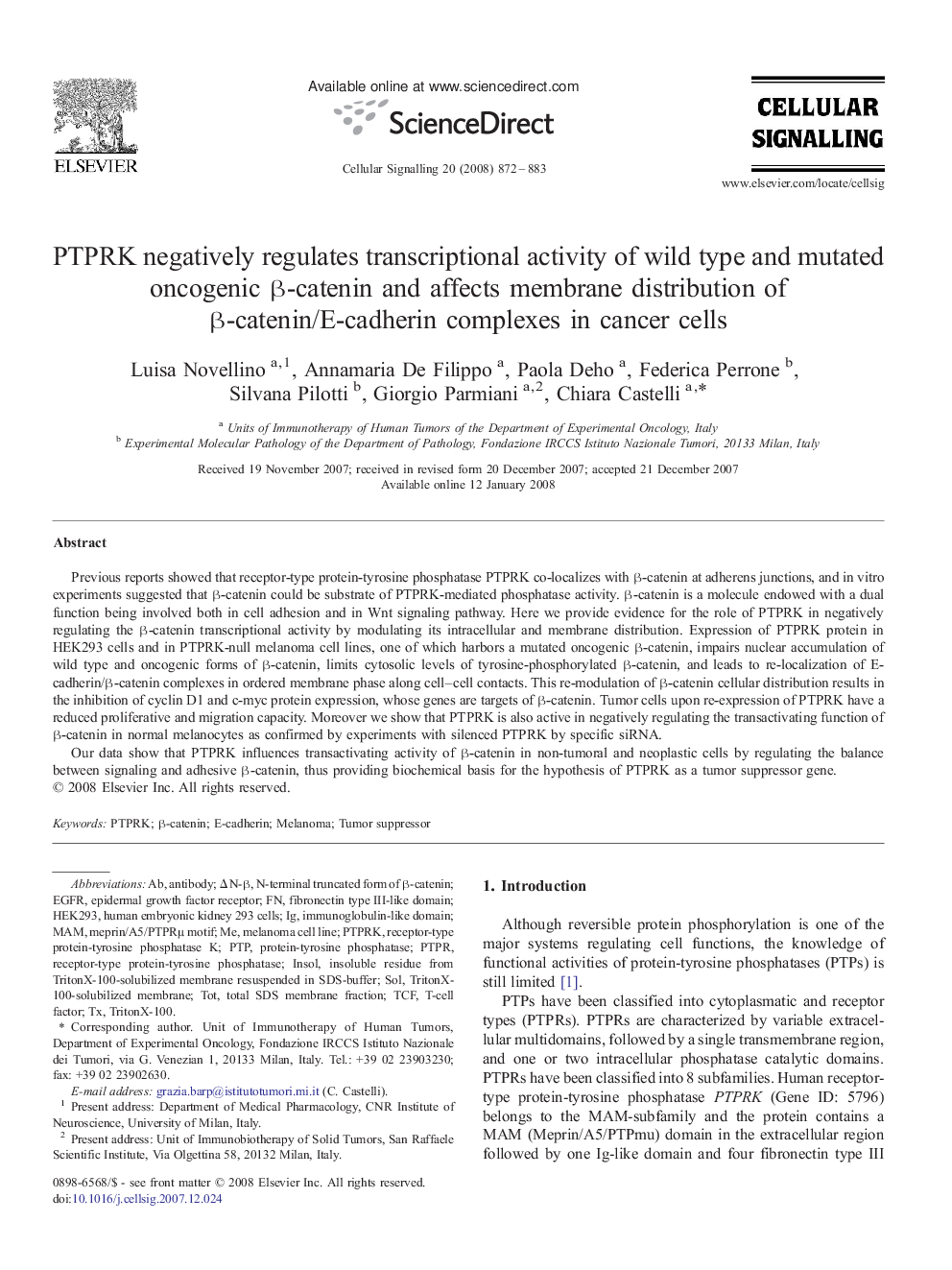| Article ID | Journal | Published Year | Pages | File Type |
|---|---|---|---|---|
| 1964320 | Cellular Signalling | 2008 | 12 Pages |
Previous reports showed that receptor-type protein-tyrosine phosphatase PTPRK co-localizes with β-catenin at adherens junctions, and in vitro experiments suggested that β-catenin could be substrate of PTPRK-mediated phosphatase activity. β-catenin is a molecule endowed with a dual function being involved both in cell adhesion and in Wnt signaling pathway. Here we provide evidence for the role of PTPRK in negatively regulating the β-catenin transcriptional activity by modulating its intracellular and membrane distribution. Expression of PTPRK protein in HEK293 cells and in PTPRK-null melanoma cell lines, one of which harbors a mutated oncogenic β-catenin, impairs nuclear accumulation of wild type and oncogenic forms of β-catenin, limits cytosolic levels of tyrosine-phosphorylated β-catenin, and leads to re-localization of E-cadherin/β-catenin complexes in ordered membrane phase along cell–cell contacts. This re-modulation of β-catenin cellular distribution results in the inhibition of cyclin D1 and c-myc protein expression, whose genes are targets of β-catenin. Tumor cells upon re-expression of PTPRK have a reduced proliferative and migration capacity. Moreover we show that PTPRK is also active in negatively regulating the transactivating function of β-catenin in normal melanocytes as confirmed by experiments with silenced PTPRK by specific siRNA.Our data show that PTPRK influences transactivating activity of β-catenin in non-tumoral and neoplastic cells by regulating the balance between signaling and adhesive β-catenin, thus providing biochemical basis for the hypothesis of PTPRK as a tumor suppressor gene.
